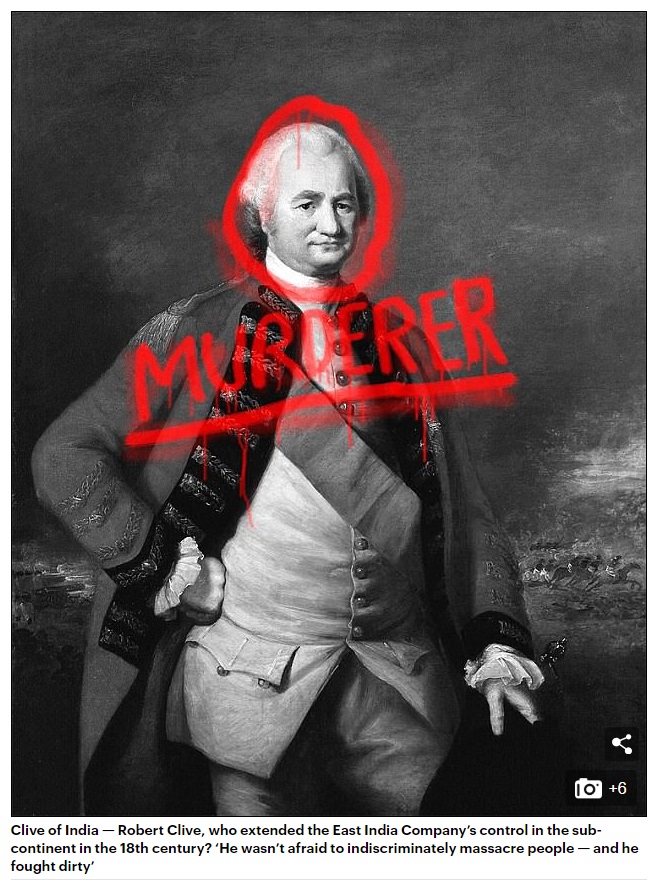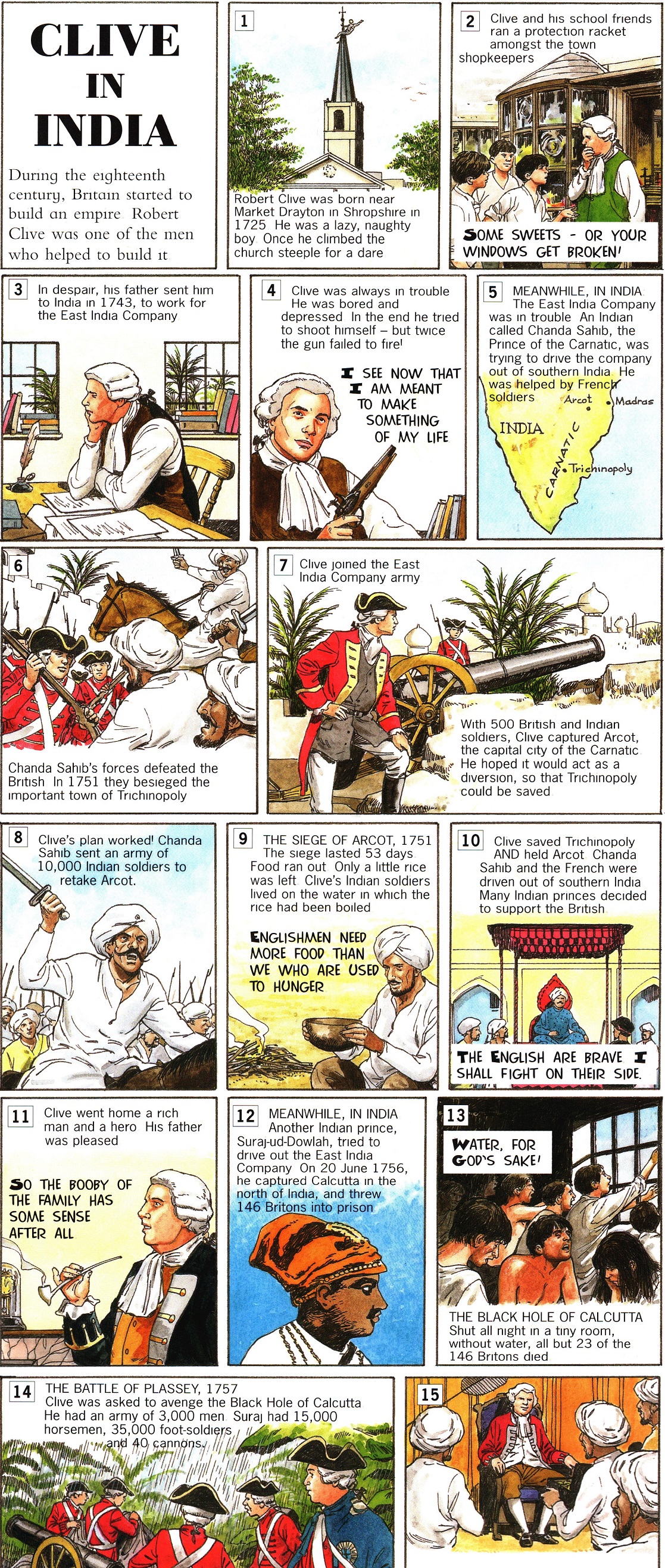
Clive in India

Introduction
For many years, the British celebrated the individuals involved in building the British Empire as 'heroes'.
One of those famous individuals was Robert Clive.
When I started teaching in the 1970s, we still studied Clive by reading the chapter on him in a book called Great People of Modern Times, by the writer R.J. Unstead (1956). Unstead revolutionised history-writing for pupils (he was the first person to include illustrations in his textbooks) and his stories grabbed my pupils' attention ... but, as you will see, his account was almost wall-to-wall hero-worship!
After you have studied this webpage, answer the question sheet by clicking on the 'Time to Work' icon at the top of the page.
Links:
The following websites will help you research further:
The British Empire:
The British in India:
•
The background a simple YouTube explanation
![]()
1 The Story of Clive – as told by the writer R.J Unstead
2 Extraordinary and Colourful
This comment on Clive is taken from the Amazon review of Clive – life and death of a British emperor by British Conservative Party politician and historian Robert Harvey.
The real-life story of Robert Clive would be judged as wildly implausible if it came from the pen of a novelist. Clive of India was one of the most extraordinary and colorful figures Britain ever produced.
The founder of Britain's Indian empire, he was also Britain's first great guerrilla fighter by the age of twenty-seven, conqueror of Bengal at thirty-one….[who] forced one of the most absolute and cruellest monarchs on earth off his throne.
3 The Outrage of Plassey
This opinion-statement was written as a debunk of Clive by British historian John D Clare (2020).
The Battle of Plassey is one of the most outrageous myths of the British Empire. The British did not win by virtue of their courage and Clive’s genius – they won because they had bribed Siraj-ud-Dowlah’s generals to desert him on the battlefield.
Then, after the battle, to justify their acrions, British writers invented stories about the Nawab’s decadence, and a ‘Black Hole of Calcutta’ which never happened.
The truth of the matter was that Siraj-ud-Dowlah was an Indian ruler trying to protect his country against the greed and malpractices of the British East India Company, and that he had occupied Fort William (and imprisoned some drunken Europeans) because they refused to hand over a criminal who was hiding there.
Is the Black Hole of
Calcutta a myth?
•
Professor
Partha Chatterjee is an Indian political scientist and anthropologist
The Battle of Plassey:
•
Not Remembering Plassey: an article in the Indian free
newwsletter Himal (2008)
•
The Real Heroes of Plassey : an article by Sk. Abdul Amin, a research scholar at Jadavpur University, Kolkata
(2019)
![]()
4 The Aftermath of Plassey
This comment was written by Professor of Global History at Oxford University Peter Frankopan in The Times of India (2017).
[Clive] – and his fellow officers – helped themselves to fortunes that would today be valued in their billions. Diversion of funds had a dramatic impact on prices, made worse by unusually dry conditions at the end of the 1760s. It was not long before reports began to be received of mass starvation. Millions died…
Clive was back in England by the time of the famine, enjoying his wealth at home. When asked about the suffering of millions in India, Clive simply answered that his priorities had been to protect the interests of shareholders, not those of the local population; his responsibility was to the East India Company – not to poor Indians and Bengalis whom he described as either 'servile, mean, submissive and humble' or 'luxurious, effeminate, tyrannical, treacherous, venal, cruel'.
Robert Clive:
• Robert Clive: a ‘great criminal’: an article by Banglaseshi journalist Gazi Mizanur Rahman
5 The Uncomfortable Art Tour
Alice Proctor is an historian of material culture based at University College London. She runs the ‘Uncomfortable Art Tours’ – ‘uncomfortable’ in that they force the visitor to address the nasty side of Britain’s colonial past: theft, slavery, genocide and massacre. Her exhibits are designed to challenge and to provoke; here she has graffitied a famous picture of Clive-looking-magnificent.
Not
everyone approves of her tours.

